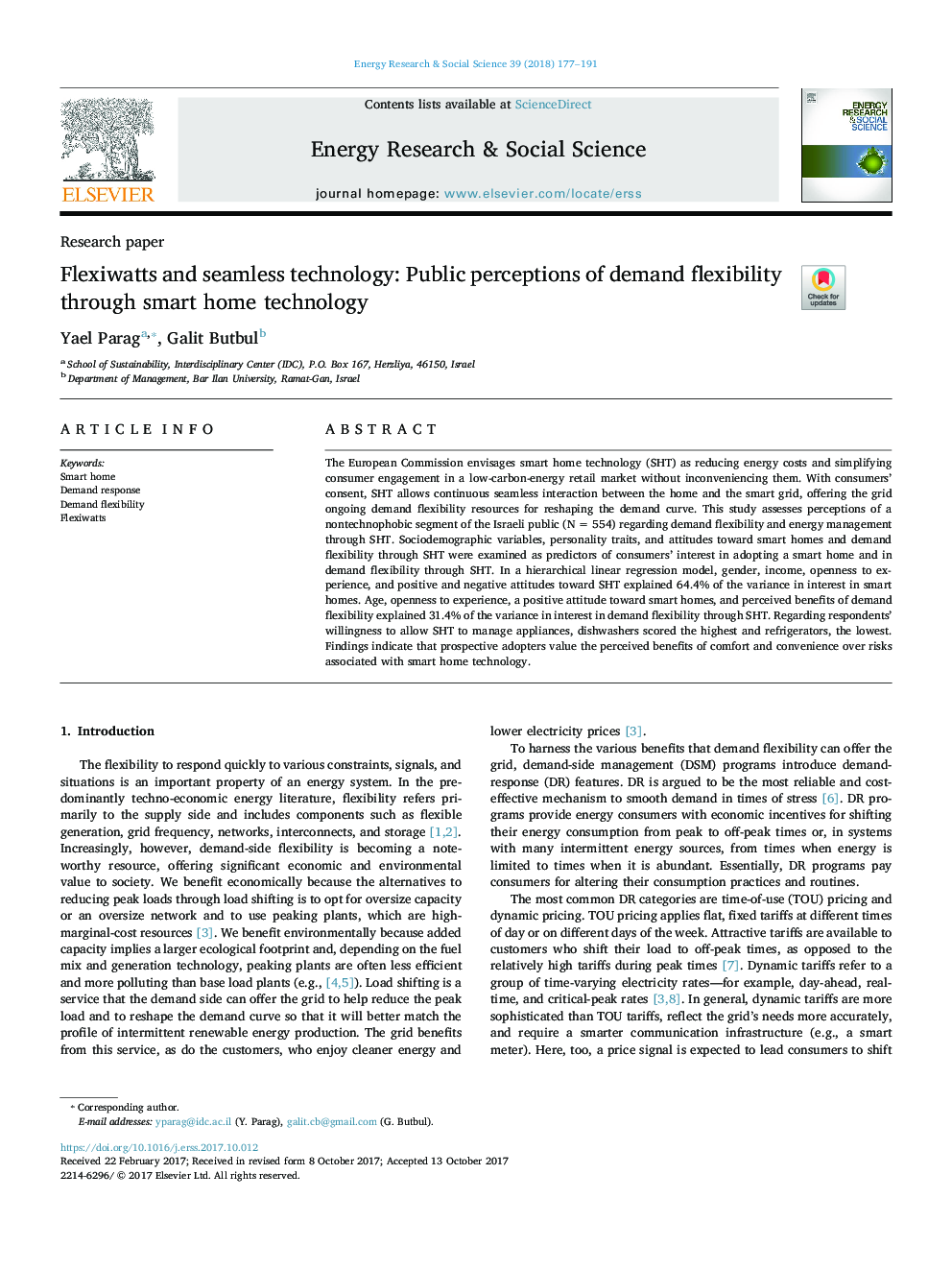| کد مقاله | کد نشریه | سال انتشار | مقاله انگلیسی | نسخه تمام متن |
|---|---|---|---|---|
| 6557580 | 1422562 | 2018 | 15 صفحه PDF | دانلود رایگان |
عنوان انگلیسی مقاله ISI
Flexiwatts and seamless technology: Public perceptions of demand flexibility through smart home technology
دانلود مقاله + سفارش ترجمه
دانلود مقاله ISI انگلیسی
رایگان برای ایرانیان
کلمات کلیدی
موضوعات مرتبط
مهندسی و علوم پایه
مهندسی انرژی
انرژی (عمومی)
پیش نمایش صفحه اول مقاله

چکیده انگلیسی
The European Commission envisages smart home technology (SHT) as reducing energy costs and simplifying consumer engagement in a low-carbon-energy retail market without inconveniencing them. With consumers' consent, SHT allows continuous seamless interaction between the home and the smart grid, offering the grid ongoing demand flexibility resources for reshaping the demand curve. This study assesses perceptions of a nontechnophobic segment of the Israeli public (NÂ =Â 554) regarding demand flexibility and energy management through SHT. Sociodemographic variables, personality traits, and attitudes toward smart homes and demand flexibility through SHT were examined as predictors of consumers' interest in adopting a smart home and in demand flexibility through SHT. In a hierarchical linear regression model, gender, income, openness to experience, and positive and negative attitudes toward SHT explained 64.4% of the variance in interest in smart homes. Age, openness to experience, a positive attitude toward smart homes, and perceived benefits of demand flexibility explained 31.4% of the variance in interest in demand flexibility through SHT. Regarding respondents' willingness to allow SHT to manage appliances, dishwashers scored the highest and refrigerators, the lowest. Findings indicate that prospective adopters value the perceived benefits of comfort and convenience over risks associated with smart home technology.
ناشر
Database: Elsevier - ScienceDirect (ساینس دایرکت)
Journal: Energy Research & Social Science - Volume 39, May 2018, Pages 177-191
Journal: Energy Research & Social Science - Volume 39, May 2018, Pages 177-191
نویسندگان
Yael Parag, Galit Butbul,